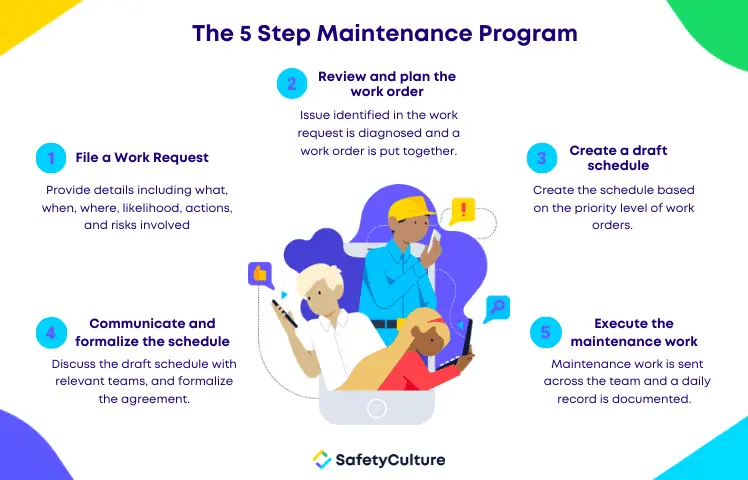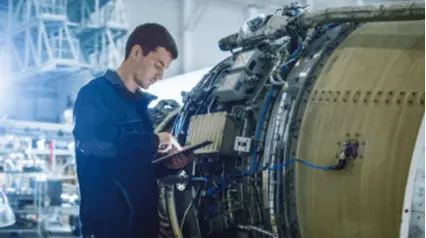Significance of a Maintenance Plan
It is common knowledge that by conducting regular maintenance, assets are kept in their best condition and prolong their life cycle. However, there are still many who do a poor job at it. Neglecting maintenance will only result in a backlog of repairs leading to equipment failure, and worst-case scenario, accidents. This is more costly and can even lengthen operational downtime, but how can businesses avoid this mistake?
This is where a maintenance plan becomes vital. A maintenance plan refers to the strategy of a company in maintaining machinery, equipment, and other types of assets used for operation. Having a maintenance plan secures long-term success for the company as it enables to improve safety, reliability, and productivity.
Where a Maintenance Plan Comes in Handy
If we are talking about where maintenance can be applied, the answer is: to everything. Maintenance isn’t just concerned with corrective activities like repairs and replacement needs, but also preventive activities such as regular inspections. Maintenance covers a wide array of use cases like in engineering, maintenance have 3 major areas, which are the following:
Civil Maintenance – covers maintenance services for buildings and facilities such as water, gas, steam, compressed air, heating and ventilation, air conditioning, plumbing, carpentry work, and painting. Some other services include landscaping, housekeeping, gardening, drainage, and fire fighting equipment.
Mechanical Maintenance – this refers to maintaining, troubleshooting, and repairing machinery used in factories, medical facilities, construction, laboratory, and transport vehicles such as aircraft and cars.
Electrical Maintenance – this area covers equipment and systems maintenance which supplies electricity to residential, industrial, or commercial buildings. So electrical equipment such as lighting, fans, generators, transformers, telephone systems, electrical installations fall under electrical maintenance.
Pre-requisites of a Maintenance Plan
The following elements should be considered and determined in building an effective maintenance plan:
- Team – The effectiveness of your maintenance plan depends on how reliable your maintenance team is. Have a dedicated team with the appropriate skill set for maintenance tasks. Depending on how big your organization is and the need for maintenance, you can allocate and assign members to different areas.
- Scope – Clearly define the purpose of your maintenance plan and specify the areas it covers. Determine priorities and the sequence of activities and skills required.
- Work instructions – Proper work instructions not only lessen the dependency on other workers, but it also ensures maintenance tasks are performed efficiently and up to standard.
- Schedule – Scheduling plays a major role in the success of executing the maintenance plan. When scheduling, there are a number of factors to consider such as priority level of the task, availability of resources, and operational schedules of both operations and maintenance teams.
- Tools & Materials – Consider the tools, spare parts, and other materials that will be needed for completing maintenance tasks.
- Contractors – In some cases, maintenance tasks will require contractors or external specialists. A good maintenance plan should include specifications of work order, along with contractor information such as the service company name, how much it accounts for, and other necessary information that top management requires.
Create your own Maintenance template
Build from scratch or choose from our collection of free, ready-to-download, and customizable templates.
Browse Maintenance templatesStep-by-Step Guide to an Effective Maintenance Program
Say you now have everything mentioned above, how does it all come together? Here’s a brief 5 step guide on maintenance planning and scheduling:

The 5 Step Maintenance Program | SafetyCulture
Take note that this guide is set in the scenario of a maintenance worker conducting a maintenance check, and he encounters an issue.
Step 1: File a work request
A work request should provide details including what, when, where, likelihood, actions, and risks involved.
Step 2: Review work request and plan the work order
Upon the work request is submitted, it is now subject to review. During the review, the problem indicated in the work request is diagnosed and a work order is prepared. The work order should include what tools and resources are needed, also, identify if there is a need for outsource. Preparation of requirements also fall under this step.
Step 3: Create a draft schedule
Once resources are completed and have been reviewed, a draft schedule is created based on the priority level of work orders. In creating the schedule, it is best to consider grouping works on the same equipment or area to maximize crew efficiency.
Step 4: Communicate and formalize a schedule
Discuss draft schedules with relevant teams, especially those departments or functions of the business that will be affected by the maintenance work. Once teams reach a consensus for the finalized work schedule, they will sign on a written document to formalize the agreement and to notify the rest of the business of the planned work arrangements.
Achieve operational excellence
Cultivate a culture of excellence with our digital solutions that enhance efficiency, agility, and continuous improvement across all operations.
Explore nowStep 5: Execute maintenance work
After finalizing the schedule, maintenance work is then sent across the maintenance teams. As the team completes their work, they have to keep a daily record of the time spent on the job and provide detailed technical feedback once the job is completed. The information from that document is used to analyze and improve equipment performance, as well as the maintenance planning and scheduling process.
Maintenance planning and scheduling are at the heart of an effective maintenance management system. Just like in the guide above, it proves that with proper maintenance planning and scheduling, organizations are able to make maintenance a standardized and efficient process for everyone; providing people with the right tools, materials, and work instructions to do the right work at the right time.
With all these steps and details to take note of, records management also becomes an important part of an effective maintenance management system. By organizing and tracking records, businesses can make sure that everyone has the right information to complete their work, effectively and efficiently.




